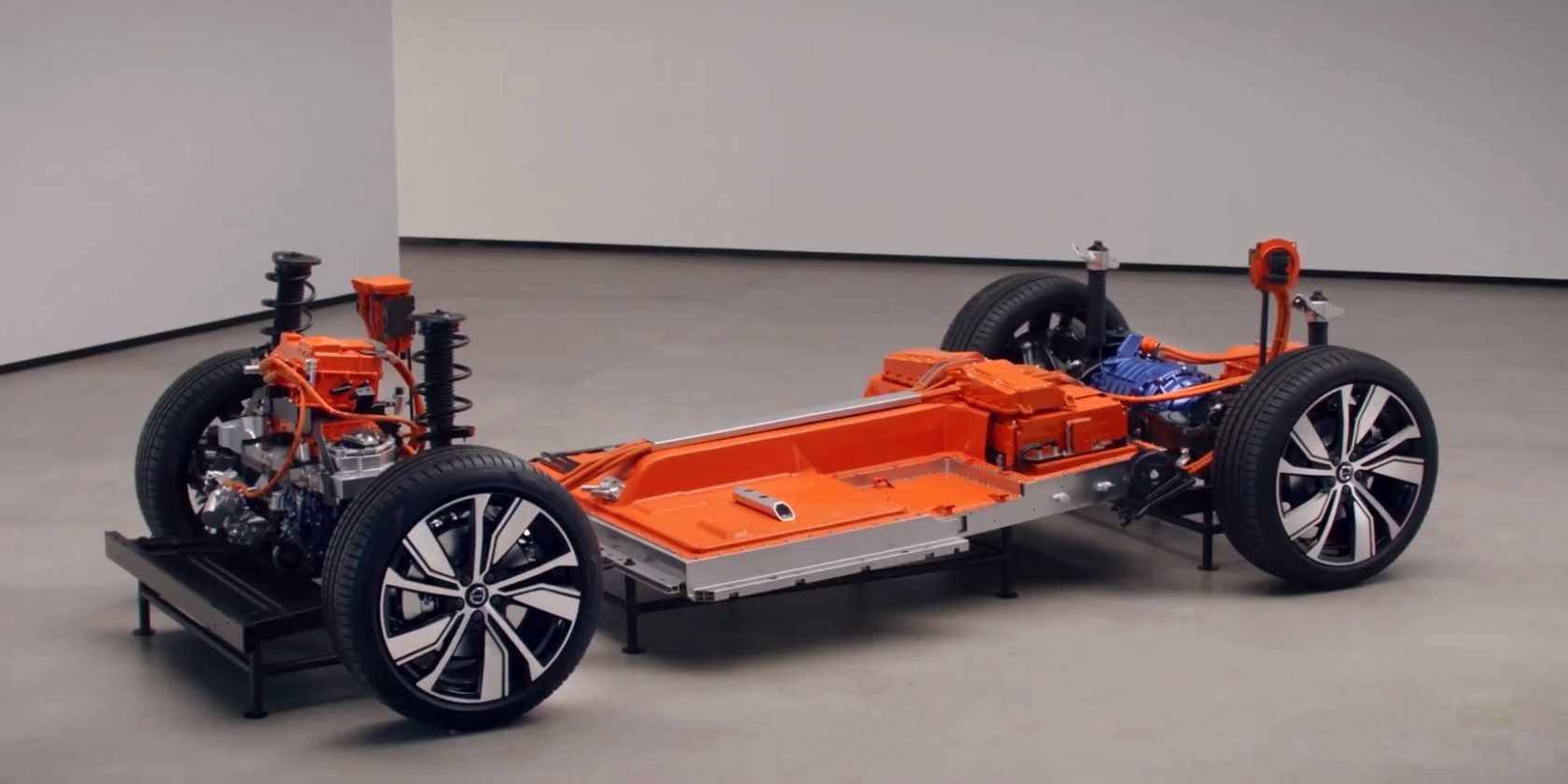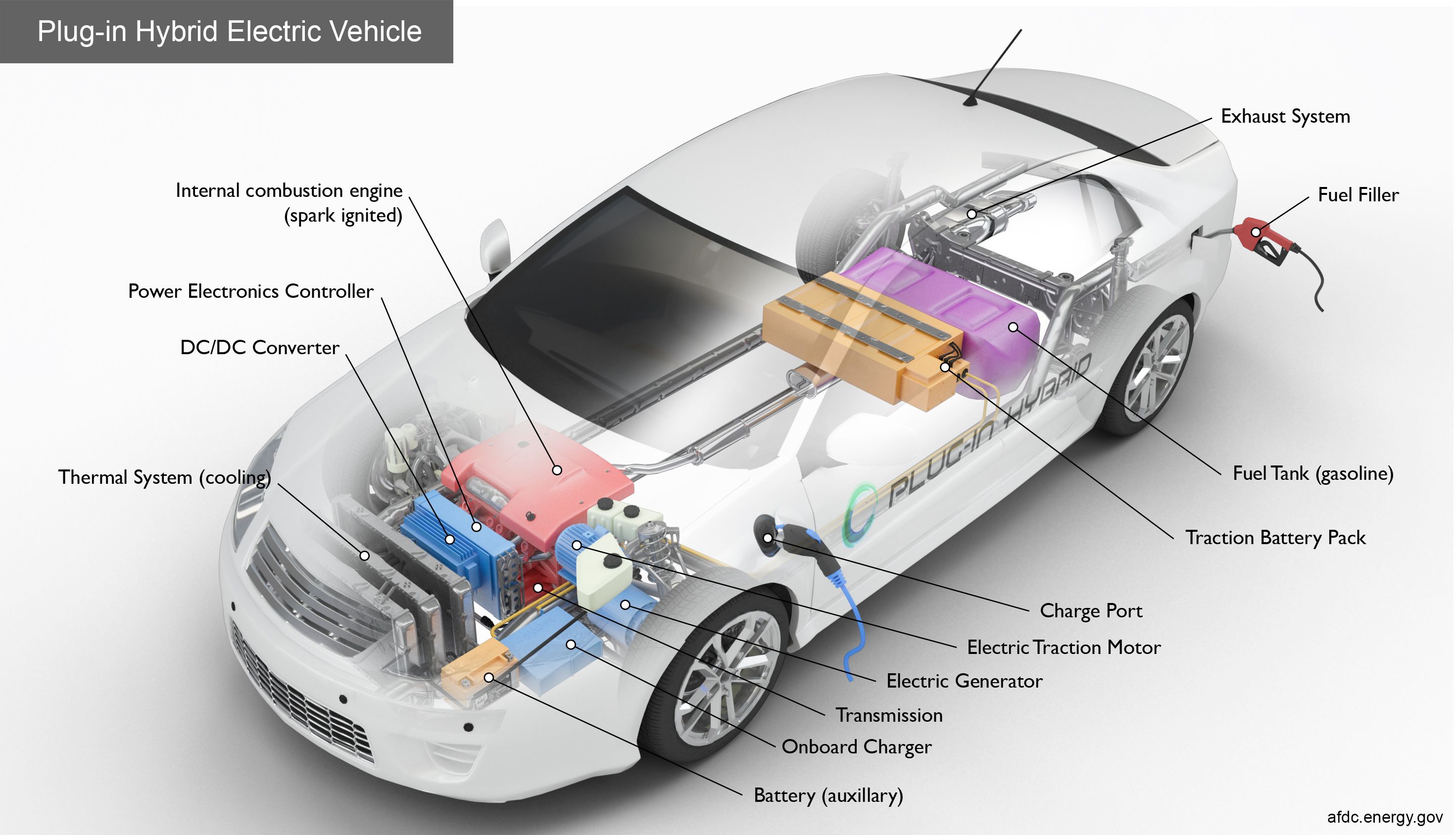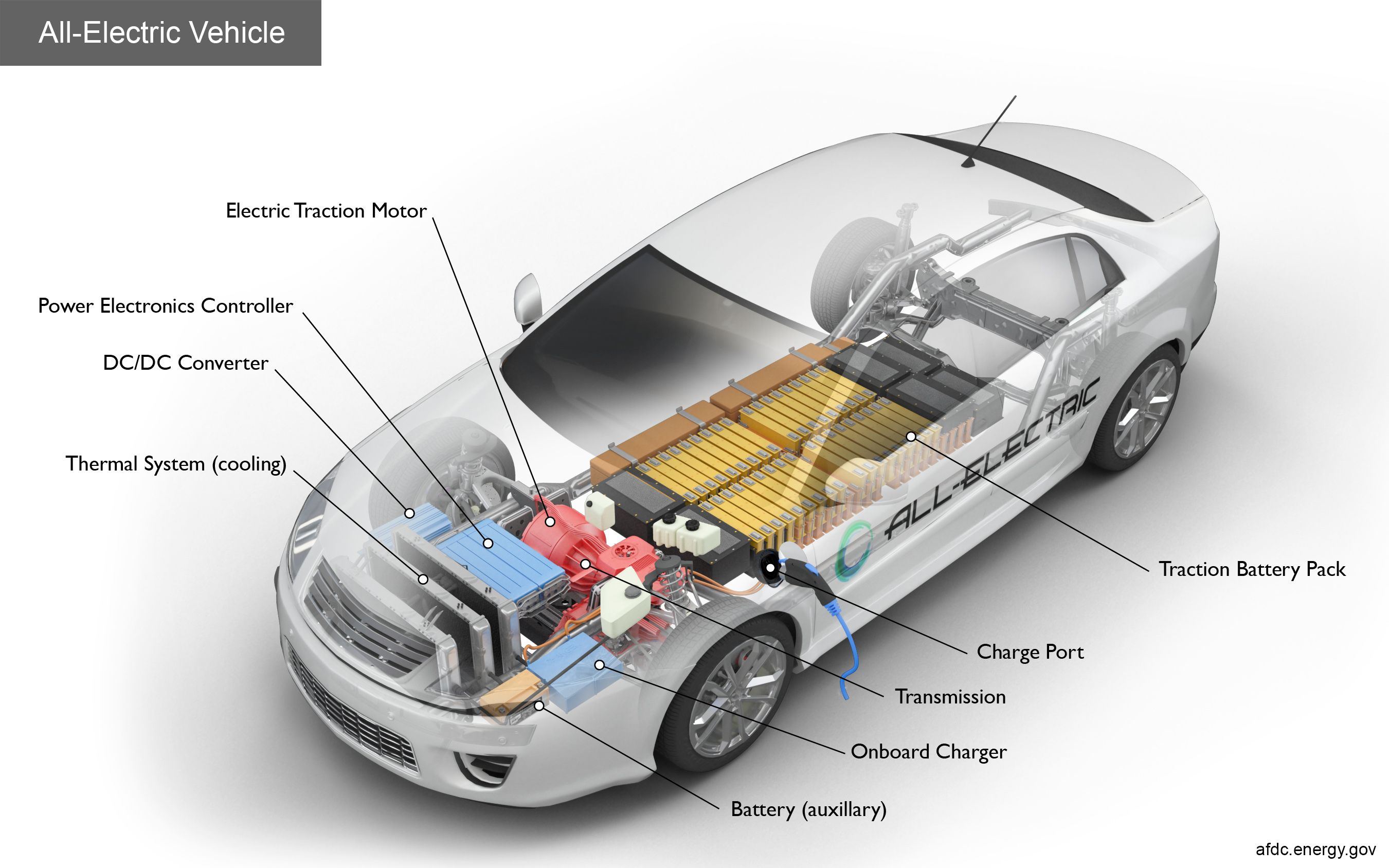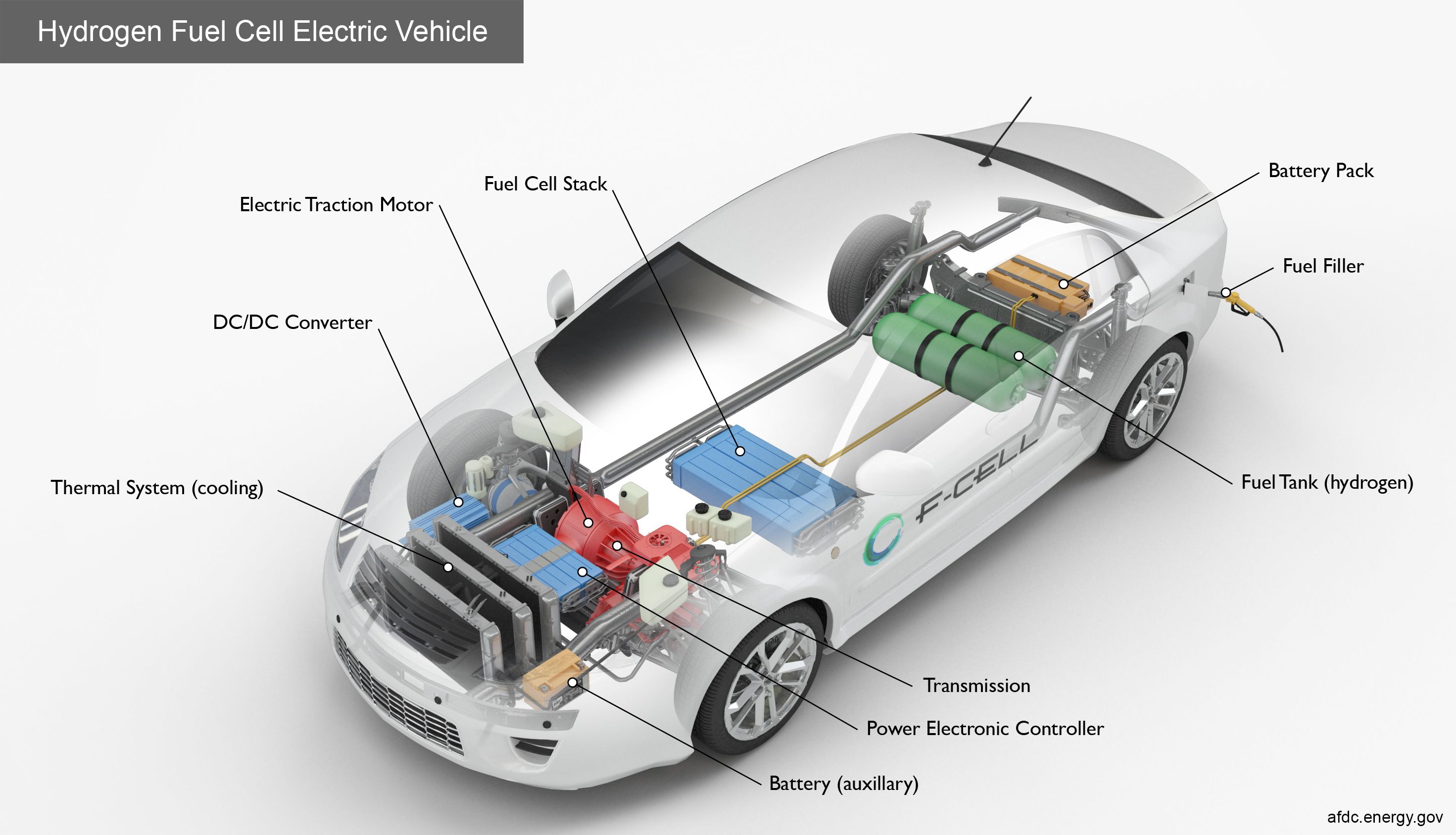The powertrain is responsible for supplying power to an electric vehicle. There are four main categories of EV powertrains, each with advantages and disadvantages.
Understanding the distinctions between a Hybrid Electric Vehicle (HEV), a Plug-in Hybrid Electric Vehicle (PHEV), a Battery Electric Vehicle (BEV), and Fuel Cell Electric Vehicles (FCEV) will empower you to make an informed decision and choose the best powertrain to suit your needs.
So, let's get started.
Hybrid Electric Vehicle (HEV)
A Hybrid Electric Vehicle (HEV) uses both an electric motor and a gasoline engine. Combining these two power sources results in improved fuel efficiency, as the car uses less gasoline.
The energy for the electric motor is stored in a high-voltage battery pack, which is charged through regenerative braking and the gasoline engine. The electric motor and gasoline engine can work independently or together, depending on the driving conditions and needs of the driver.
The hybrid technology captures energy typically lost in conventional cars during deceleration and converts it into electricity to be stored in the battery (known as regenerative braking). This results in a more efficient and eco-friendly driving experience.
HEV Advantages
- Reduces tailpipe emissions but does not eliminate them completely.
- Reduces fuel expenses.
- Improves air quality in urban areas.
- The ability to continue using traditional gas stations eliminates the need to find a charging station.
- Regenerative braking (every time you apply the brakes in a hybrid vehicle, it helps recharge the battery slightly.
HEV Disadvantages
- The vehicle's weight is affected by the presence of both electrical and gasoline components, negatively impacting performance and fuel efficiency.
- HEVs can have higher maintenance expenses due to their complex mechanics.
- Although hybrids are designed to provide some emissions-free driving, their battery capacity limits this capability.
- Emissions from hybrid vehicles still contribute to air pollution and further worsen the effects of climate change.
- The upfront cost of acquiring a hybrid vehicle may be greater than other options.
Plug-In Hybrid Electric Vehicle (PHEV)
Plug-in Hybrid Electric Vehicles (PHEVs) are advanced hybrids that use a combination of an electric motor and an internal combustion engine for power. They boast larger batteries than conventional hybrids, allowing them to drive up to 50 miles on electric power alone before switching to the ICE.
Charging options include wall outlets, charging equipment, regenerative braking, and the ICE itself. The vehicle operates on electric power until the battery is nearly depleted, then seamlessly switches to the ICE.
PHEV Advantages
- Significantly lower pollution compared to conventional hybrids.
- Operate like a conventional hybrid, but with a bigger battery powering the vehicle.
- Can be charged through a plug, but not exclusively electric like a Battery Electric Vehicle (BEV).
- Can cover longer distances solely on electricity compared to conventional hybrids.
- No worries about running out of power during a trip (range anxiety).
- Lower fuel expenses.
- Quicker acceleration due to more powerful batteries than conventional hybrids and gasoline vehicles.
- Regenerative braking.
PHEV Disadvantages
- Although PHEVs are an improvement over traditional hybrids, they still possess the same disadvantages.
Battery Electric Vehicle (BEV)
Battery Electric Vehicles (BEVs) are distinct from traditional cars as they don't use internal combustion engines. Instead, these vehicles are powered solely by batteries which can be charged using Level 1, 2, or 3 chargers. Home charging can be done with Level 1 or Level 2 chargers, while Level 3 chargers are meant for commercial charging stations.
Due to the absence of an internal combustion engine, BEVs have the advantage of being able to travel further on a single charge compared to hybrid vehicles.
BEVs are rapidly emerging as the new norm for EVs and represent the future of transportation.
BEV Advantages
- The powertrain design of a BEV is simple and cost-effective, as the power from the battery is directly transmitted to the motor(s) attached to the axle(s).
- Larger batteries, compared to hybrids, offer an extended all-electric range.
- Regenerative braking.
- Zero tailpipe emissions.
- Low operating expenses.
- Superior performance compared to other hybrid vehicles.
BEV Disadvantages
- BEVs need to be plugged in to charge, and the process may take considerable time.
- Charging at home using a Level 2 charger typically takes place overnight for a full charge.
- Using a public DC Fast Charging Station can get an 80% charge within 30-60 minutes.
- Planning for charging is required for extended trips as the range may not be sufficient.
- The initial price of a BEV may be higher compared to other EVs, especially if it has a greater range.
Fuel Cell Electric Vehicles (FCEV)
FCEVs use hydrogen fuel cells to convert stored energy into electricity, which powers the vehicle. Unlike traditional gasoline-powered cars, FCEVs produce no harmful emissions. These vehicles have hydrogen tanks, similar to the fuel tanks in regular cars, and can be refueled quickly, usually in under four minutes, and have a range of over 300 miles. Some major car manufacturers are now producing FCEVs, but they are currently limited in availability, and their production depends on infrastructure availability.
FCEV Advantages
- The smaller battery size in an FCEV results in lower replacement costs compared to a battery electric vehicle (BEV).
- The reduced weight of the battery pack in an FCEV improves the vehicle's performance.
- Regenerative braking.
- An FCEV can be recharged quickly, typically taking around four minutes to reach a full charge from empty.
FCEV Disadvantages
- Fueling stations are currently limited, primarily found in a few select states. California has the largest market concentrated in major metropolitan areas such as San Francisco, San Diego, and Los Angeles.
- The cost to refuel an FCEV is relatively high compared to charging an electric car, with a typical fill-up costing around $80.
- Despite the increasing popularity of FCEV, the majority of hydrogen fuel production currently comes from non-renewable sources such as natural gas and coal, which contribute to CO2 emissions.
Which Is the Right EV Powertrain Option for You?
Now you know how to weigh the powertrain options when considering an EV.
- If charging infrastructure is a major concern, consider a Hybrid Electric Vehicle (HEV).
- If reducing emissions and mostly driving around town is your priority while balancing cost and electricity dependence, a PHEV may be a good option.
- If you primarily drive within the city and want a quiet, environmentally friendly, low-maintenance, and cost-effective vehicle, consider a Battery Electric Vehicle (BEV).
- If you want the benefits of a BEV without waiting for charging and have access to hydrogen fueling stations, a Fuel Cell Electric Vehicle (FCEV) may be the best fit for you, with refueling times as quick as four minutes.
Your decision will also likely be driven by price, as with all things in life. It could be that you want a full EV, but the price of a new EV is just out of reach. If that's the case, you could always opt for one of the alternative EV powertrain options.





